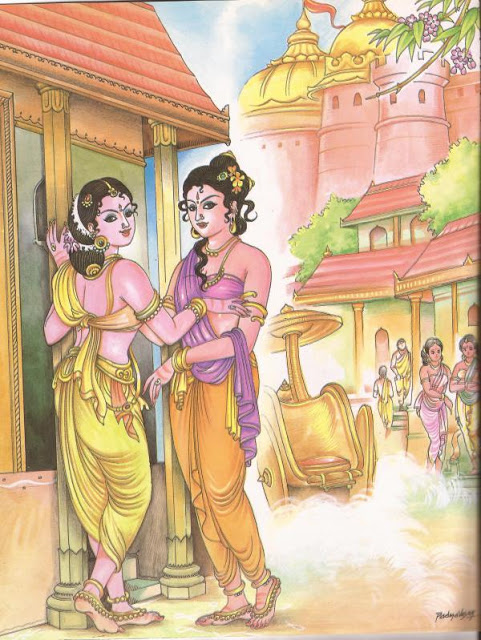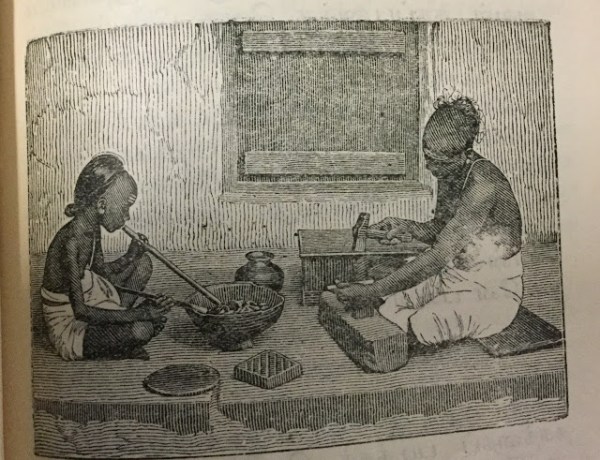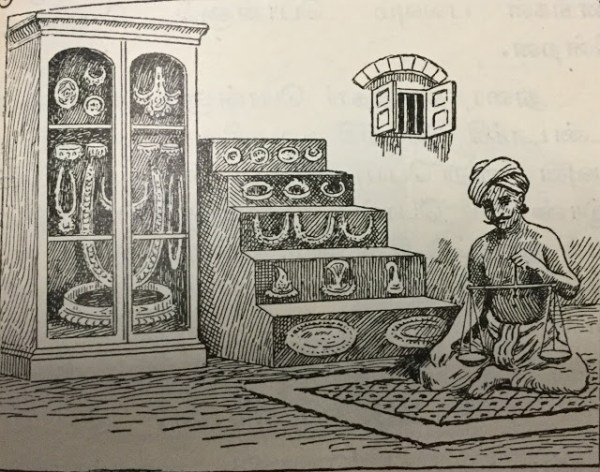
Written by London swaminathan
Date: 15 APRIL 2017
Time uploaded in London:- 15-59
Post No. 3821
Pictures are taken from various sources; thanks.
contact; swami_48@yahoo.com
Silappadikaram, the Tamil epic, is the story about Kannaki and Kovalan (The details of the story are given at the end of this post).
Matalan, the Brahmin, is a link in the story. He plays a key role and fills the gaps in the story. He advised the mighty king Cheran Senguttuvan about the good things in life (Dharma).
In the Nirpataik (Chapter) Kaathai of the epic he gives some important details:-
While King Senguttuvan was sitting on the throne, the Brahmana Matalan appeared before him and said:
“Long live the King! After going around the Potiyil Hills, sacred to the great sage (Agastya) and bathing in the famous ghat of Kumari, I was returning, when, as if impelled by fate, I went into Madura belonging to far-famed Tennavan (Pandya King) of the sharp sword.

There when Matari heard that beautiful (Kannaki) had defeated the Pandyan king of the mighty army with her anklet, she proclaimed in the Taateru manram (common meeting place of the cowherds and cowherdesses, and was generally under a tree):-
“O people of the cowherd community! Kovalan had done no wrong; it is the king who has erred; I have lost her to whom I gave refuge. Have the king’s umbrella and the sceptre fallen from the righteous path?” With these words, she (Matari) threw herself into the burning flames in the dead of night.
Kavunti, distinguished for her penance, took a vow to die of starvation and thus gave up her life.
I heard in full detail all this and also of the devastation that over took the great city of Madurai ruled by the Pandyan of the golden car. Overcome by this I went back to my native place (KaveriPumpattinam, Port city of Chozas) and leant that Kovalan’s father distributed all his wealth in charity and entered Indra Viharas/Buddhist temple and practised penance. Kovalan’s mother died of pity. Kannaki’s father also gave away his wealth in religious gifts and adopted Dharma in the presence of Ajhivakas. His wife gave up her good life within a few days ( of Kovalan’s execution , followed by the death of Pandya King and Queen and Kannaki burning Madurai city).
The lady Matavi (courtesan), shorn of her hair with the flower wreaths therein, entered the Buddha Vihara and received the holy instruction. She told her mother that her daughter should not become a courtesan.
Brahmin Matalan continued………….
“These people died because, they heard this news from me, therefore I come to bathe in the holy waters of the Ganges (In order to purify myself). Long live you, O King of Kings!
When Matalan gave the king the tragic news about Kannaki’s parents, Kovalan’s parents, Cowherd woman Matari, Jain woman saint Kavunti and courtesan Matavi, the mighty lord of the Cheras, asked Matalan:
“May I hear what happened in the highly flourishing Pandya Kingdom after the king’s death?”
Matalan said,
“May you long live, King of the great world! You destroyed in a single day nine umbrellas of nine kings, who joined together in an alliance against your brother in law Killi valavan.

Human Sacrifice of 1000 people!
“The victorious (Pandya king) Ver Chezian residing at Korkai (Port City of the Pandyas), offered a human sacrifice of one thousand goldsmiths in a day to divine Pattini (chaste woman) who had twisted off one of her breasts (with which Kannaki burnt Madurai city).
“And when ancient Maduria lost her glory and was chafing in untold trouble owing to royal injustice, this Pandyan prince of the lunar line (Chandra vamsa) which was celebrated for the exemplary way in which it gave protection to the people of the southern regions, mounted in succession the royal throne of Madura, like the (sun) mounting in the morning, with his rays crimson, the divine chariot with the single wheel, yoked to seven horses with tiny bells attached to its necks. May the king of our land live for all time protecting the world from aeon to aeon; live he in fame.”
Thus, from the Brahmin Matalan we come to know the fate of cowherdess Matari, Jain woman saint Kavunti, Courtesan Matavi, Parents of Kannaki and Kovlan and the human sacrifice of 1000 goldsmiths.

Silappadikaram Story:–
Silappathikaram is the earliest among the available Tamil epics. It was written by a poet cum prince Ilango. The story of the epic is as follows:-
Kannaki and Kovalan were the daughter and son of wealthy merchants of the port city Kaveri Pumpattinam of Choza kingdom . Both of them were married and before long Kovalan fell into the spell of courtesan Matavi. But Kannaki was a faithful wife and received Kovalan wholeheartedly when he came back to her. They wanted to start a new life away from their home town and so they travelled to the renowned city of the Pandyas, Madurai.
Kannaki came to Madurai along with her husband Kovalan to sell her anklet and start a new life. But, her husband was unjustly accused of stealing the anklet of the Queen by a GOLDSMITH and was killed under the orders of the Pandya King. To prove the innocence of her husband, and expose the heinous crime of the Great Pandya King, Kannaki went to his court with one of her anklets. She accused the Pandya King of having ordered the death of her husband without conducting proper trial. The Pandya Queen’s anklet had pearls whereas the anklet of Kannaki had gems inside. She broke her anklet in the presence of the king and proved that her husband Kovalan was not guilty. Immediately Pandya King and Queen died, probably of massive heart attack.

Image of Kannaki and Kovalan
Afterwards Kannaki burnt the city by twisting one off her breasts and throwing it in the streets of Madurai City , Capital of the Pandya Kingdom, sparing the elderly, invalids, children, Brahmins and women. In other words, all the bad people were burnt alive. Later she went to Chera Nadu (present Kerala in South India) and ascended to Heaven in the Pushpaka Vimana/ pilotless airplane, that came from the Heaven. When the Chera King Senguttuvan heard about it from the forest tribes who witnessed her ascension, he decided to go to Holy Himalayas to take a stone and bathe it in the holy Ganges and then carve a statue out of it for Kannaki. King Senguttuvan’s brother Ilango composed the Silappadikaram giving all the details about the chaste woman/Patni Kannaki. Though the incidents happened in the second century CE, the epic in its current form is from the fourth or fifth century CE (Post Sangam Period).
–Subham–